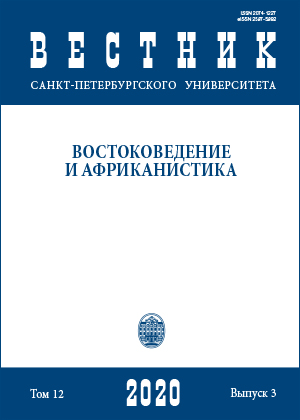On the Symbolic Meanings of the Words for Color in Russian and Korean Expressions and their Translation
DOI:
https://doi.org/10.21638/spbu13.2020.302Abstract
Since ancient times, people have known that color affects the physiological functions and emotions of an individual. Colors represent certain symbolic meanings in many nations and people often use colors to exchange their thoughts and feelings. Over the course of their use, thanks to the rich experience and creative activity of the popular masses, expressions with the symbolic meaning of color appeared in different languages. Thus, these expressions reflect national customs, life, ideas, and the interests of a given country. Therefore, in different national languages, expressions containing the word of the same color designation can have different symbolic meanings. If the speaker is not well aware of these differences, it may cause the listener to have other feelings than what the speaker intended. Expressions with color vocabulary occupy an important place in the Korean and Russian language. Currently, there is a noticeable interest in studying the Russian language in the Democratic People’s Republic of Korea (DPRK), and the same applies with the Korean language in Russia. However, there are very few scientific papers devoted to comparing color expressions in the two languages. It is beneficial to conduct a linguocultural comparative analysis on symbolic meanings of color vocabulary in Russian and Korean, which makes it possible discern the semantic nuances of words for color. This article contributes to better understanding the history, culture, and traditions in both Russia and DPRK by analyzing the cultural and linguistic aspects on the expressions which reflect the conception and consciousness of different colors and their usages in Russia and the DPRK.
Keywords:
words for color, symbolic meaning, national culture, linguistics and culture, translation.
Downloads
References
Downloads
Published
How to Cite
Issue
Section
License
Articles of "Vestnik of Saint Petersburg University. Asian and African Studies" are open access distributed under the terms of the License Agreement with Saint Petersburg State University, which permits to the authors unrestricted distribution and self-archiving free of charge.





